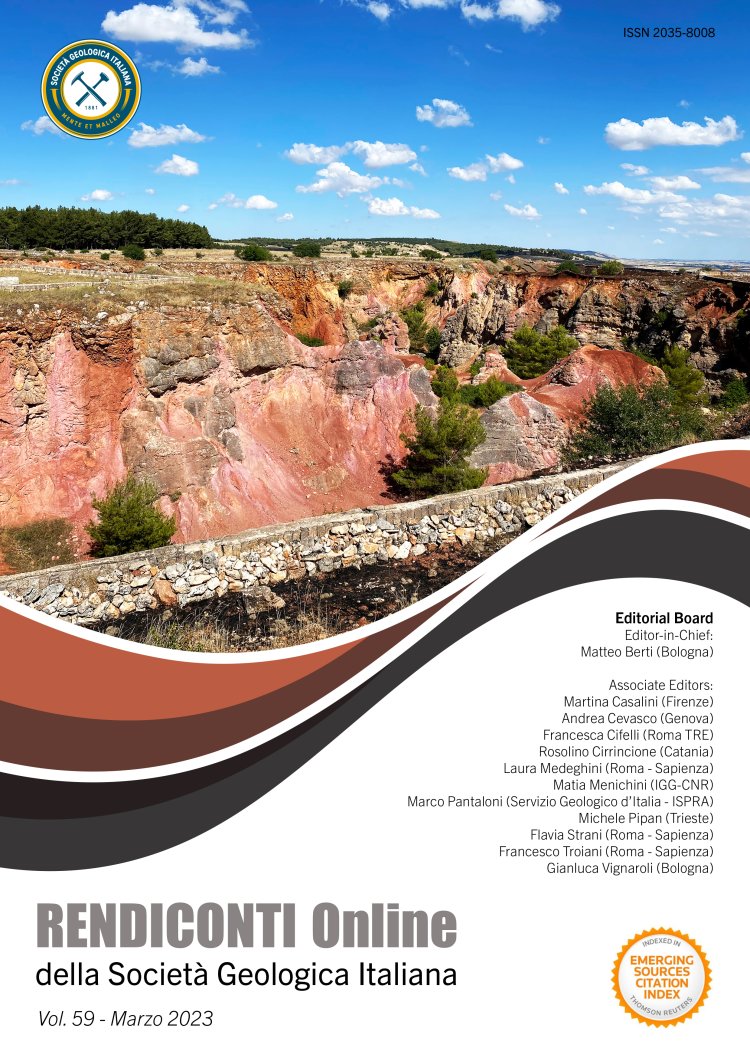
Neogene cold seep carbonates in the Crotone Basin (South Italy)
Mario Borrelli1, Bruno Francesco Umbro1, Ulrich Heimhofer2, Pierluigi Santagati1, Emilia Le Pera1 & Edoardo Perri1
1Dipartimento di Biologia, Ecologia e Scienze della Terra, Universita della Calabria, Arcavacata di Rende, Cosenza, Italy.
2Leibniz Universität Hannover, Institut für Geologie, Callinstraße 30, D-30167, Hannover, Germany.
Corresponding author e-mail: mario.borrelli@unical.it
Volume: 59/2023
Pages: 2-8
Abstract
A Neogene cold seep carbonate body crops out in the Crotone Basin and is characterized by a Conduit facies, made of authigenic carbonates filling the gas/ fluid escaping pipes and a Pavement facies made of early-cemented bioclastic and siliciclastic sediments colonized by a chemo-symbiotic fauna dominated by Lucinid bivalves. The conduit facies is composed of alternated mm-thick dark micritic and clear sparitic lamine rimming and inward accreting open fissures. Micrite exhibits microbial peloidal to dendrolitic fabrics, while sparry laminae shows prismatic-pyramidal to anhedral-subhedral crystals. The pavement facies is made of microbial boundstones, bioturbated mudstone/wackestones and packstone/grainstones passing into mixed arenites, all interbedded with syn- sedimentary breccias due to local overpressure conditions because of gas/fluid injections. Planktonic foraminifera are widespread and suggest a deep-water setting. Stable Isotopes analysis in all the facies shows 13C depletion (δ13C values between -6.8 and -38‰) and 18O enrichment (δ18O values between -0.04 to 3.4‰) reflecting destabilization of gas hydrates made of methane/crude oil mix.
Keywords
Get Full Text